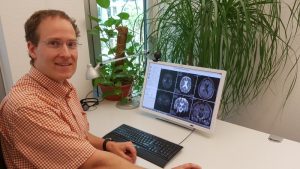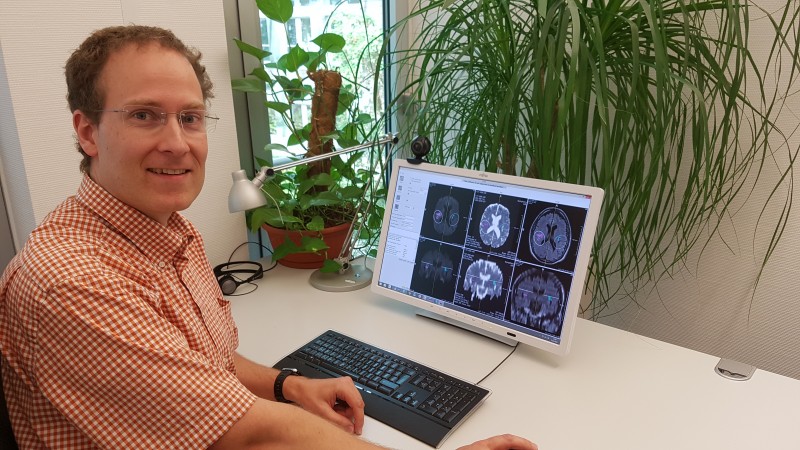
Jan Klein; Photo by Fraunhofer MEVIS
Stroke is a devastating disease leading to death and disability in large numbers of patients with massive social and economic impact. Intravenous thrombolysis with Alteplase is available as an effective and safe treatment of acute stroke if given within 4.5 hours of symptom onset.
However, in about 20% of acute stroke patients the time of symptom onset is unknown e.g. because symptoms are recognized when waking-up from sleep in the morning. This large group of patients is currently excluded from treatment with Alteplase only due to the missing information on the time of symptom onset.
WAKE-UP was a European multicentre investigator-initiated randomized placebo-controlled clinical trial of MRI based thrombolysis in acute stroke patients with unknown time of symptom onset.
In preparatory work, the WAKE-UP consortium developed an innovative approach of using brain MRI as surrogate marker of stroke lesion age which may be used to identify stroke patients likely to benefit from thrombolysis.
The final results of this trial will be presented at the press conference within ESOC 2018, in Gothenburg, Sweden, from 11:40 to 11:50 CET on Wednesday, 16 May.
As the revealing of the WAKE UP trial results approaches, SAFE used the opportunity to talk with the two scientists, Jan Klein from the Fraunhofer Institute for Medical Image Computing MEVIS, Bremen, Germany and Bastian Cheng, from School of Medicine and University Hospital Hamburg-Eppendorf to learn more about SONIA – the diagnostic imaging software that was developed during the course of the project.
Why and how was the software SONIA created?
The assessment of multi-parametric acute stroke MR images to guide treatment decisions requires specific experience on behalf of the clinician. Since this experience can vary, the interpretation of acute stroke MRI is in large parts user dependent and can be partly subjective. This can contribute to imbalances in the quality of stroke MRI assessment between different centers, leading to inevitable variations in the quality of acute stroke treatment. The performance of clinical trials that rely on acute stroke MRI has suffered as a result.
Automated image processing and analysis software can support investigators when making judgements about MR images. Such software works by integrating the experience of multiple experts in the field with information from large MRI data sets. SONIA was developed to standardize and improve the quality of image analysis and make modern imaging feasible in the wider community, even beyond the setting of stroke imaging experts.
Who named it and is it an acronym?
The Stroke Quantification Tool (Sonia) has been developed and named by Fraunhofer MEVIS in strong collaboration with the University hospital Hamburg Eppendorf.
What is the practical value of this imaging software?
SONIA has been developed for the efficient and reliable quantification of stroke MRI data.The basic idea behind the tool is to allow for a quantitative comparison between areas of segmented lesions and segmentations achieved by mirroring the lesions along the medial longitudinal fissure.
SONIA can semi-automatically extract the relevant information for treatment decisions from the acute MR images (DWI, FLAIR). This comprises the definition and quantification of DWI and FLAIR lesion, the calculation of signal changes (apparent diffusion coefficient decrease, FLAIR signal intensity increase), the assessment of the severity of leukoaraoisis, and of the presence and frequency of microbleeds. In addition to the rigid registration of the FLAIR and DWI data, SONIA also included a deformable registration of data sets to the MNI 152 atlas for a detailed quantitative analysis with respect to certain brain regions.
Is it going to be used only for the WAKE-UP trial or it might have an independent ’life’ and continue helping people even after the project is completely finished and its final results presented to the public?
The centrally stored MR images have been post-processed by SONIA to extract all relevant information. SONIA might be used for other related studies where a large number of data sets has to be efficiently analyzed in a standardized way.





